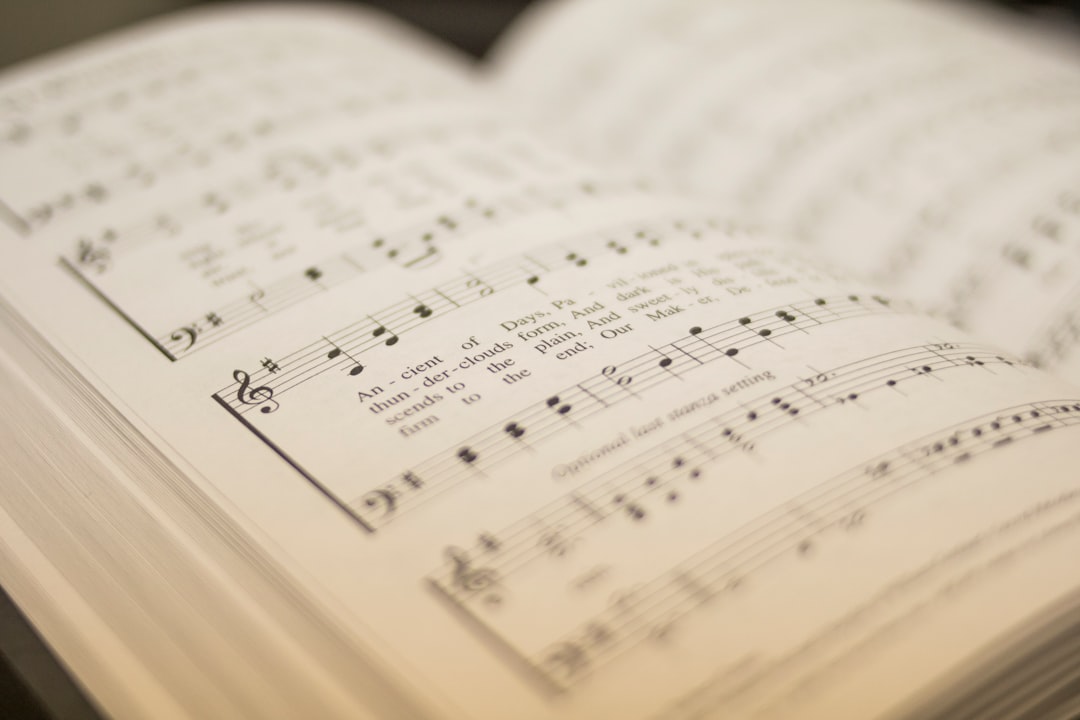For centuries, hymns have played an integral role in religious and spiritual practices around the world. But what exactly are hymns? And why are they so important to so many people? In this blog post, we’ll explore the rich history of hymns and their significance, dive into the role they play in worship and daily spiritual life, and examine the many different types of hymns and their cultural and musical diversity. Whether you’re an avid singer or simply curious about the power of music and spirituality, read on to learn more about the fascinating world of hymns.
The History and Significance of Hymns

For centuries, hymns have been an integral part of Christian worship. These religious songs were originally created as a way to convey the teachings and values of the church to the masses, using music as a tool to help people better understand and connect with their faith.
The earliest hymns were written in the 4th century and were based on the psalms of the Bible. Over time, they evolved to include new melodies and lyrics, reflecting the changing cultural and musical landscape of each era.

Hymns have played an important role in Christian history, serving not just as a means of worship, but also as a way to document and preserve the beliefs and traditions of various religious movements. They have been written and sung by people across the globe, in many different languages and musical styles, reflecting the diversity and richness of the Christian faith.
Perhaps most importantly, hymns have deeply spiritual and communal value, allowing people to come together as a group to express their shared beliefs and values through music. This collective experience can be incredibly powerful, helping people to feel more connected to each other, and to the divine.
Overall, the history and significance of hymns is a testament to the enduring power of music as a tool for spiritual and social connection. Whether you prefer traditional hymns or contemporary worship music, there is no denying the enduring beauty and power of these sacred songs.
Hymns in Worship: Their Spiritual and Communal Value
When it comes to religious music, hymns have played a central role in worship for centuries. These religious songs, often sung in a group setting, hold deep spiritual and communal value to believers.
One of the key spiritual values of hymns is their ability to evoke a sense of reverence and awe towards God. The lyrics of many hymns are centered on themes of praise and worship, offering a way for congregations to express their gratitude and adoration to God through music. For this reason, hymns have often been called “sacred music” or “devotional music.”
In addition to their spiritual value, hymns also have a strong communal aspect. Singing hymns together fosters a sense of unity and togetherness among a congregation. Whether a person has a beautiful singing voice or not, everyone can join in and participate in the music, thus creating a feeling of inclusivity and bonding.
Moreover, hymns have a way of connecting different generations and allowing people to share a common experience despite differences in age or background. Many traditional hymns have been sung for centuries, and the act of singing them now connects modern congregations to those who have come before. This sharing of a common history and tradition creates a sense of continuity and heritage for people of faith.
It’s important to note that hymns are not only valued by Christians, but by people of many different faiths who incorporate music into their worship services. From Catholic hymns to Jewish melodies, religious music has played an important role in many cultures and traditions.
Overall, the spiritual and communal value of hymns in worship cannot be overstated. For many, singing hymns is a fundamental aspect of their faith and practice. Whether traditional or contemporary, these religious songs provide a way for believers to connect with each other and with God in a powerful and meaningful way.
Traditional Hymns vs. Contemporary Hymns: Which is Better?

As a worship leader or a member of the congregation, you may have noticed that there are different types of hymns being sung in churches. Some churches prefer traditional hymns, while others opt for contemporary worship music. Each type has its own distinctive characteristics, and it’s up to you to decide which one resonates with you best. Here are some differences to consider:
Traditional Hymns:
- They have a long history of being sung in the church. Some of them date back centuries.
- Their lyrics are often rich in theology. They focus on the majesty of God, His salvation, and His creation.
- Traditional hymns melodies are often simple and easy to sing. They are designed for congregational singing.
- They often have a slower tempo, which provides a sense of reverence and contemplation.
Contemporary Hymns:
- They are more recent compositions that emphasize modern musical styles such as rock, pop, and country.
- Their lyrics are often focused on experiential praise and personal introspection.
- Contemporary hymns are often more complex harmonically and rhythmically, which can make them difficult for people to sing along to.
- They often have a faster tempo, which can create a sense of energy and enthusiasm.
There is no simple answer to the question of which type of hymns is better because it largely depends on personal preference. However, it’s essential to keep in mind that both types of hymns have their place in the church. Traditional hymns can be beneficial in creating an atmosphere of reverence and contemplation, while contemporary hymns can create moments of energetic praise and can make emotional connections to modern worshippers.
Many churches blend the two together to create a more balanced and blended worship experience. Whatever your church chooses, it is essential to remember that each hymn has its own unique value and beauty, and both traditional and contemporary hymns can bring people closer to God.
Exploring the Cultural and Musical Diversity of Hymns
When most people think of hymns, they imagine the traditional Christian hymns they heard on Sunday mornings growing up. However, hymns have a rich and diverse history that spans many different cultures and musical styles.
« Unveiling the Shocking Truth: Jesus’ Controversial Instruction to ‘Hate Our…’ Explained
Uncovering the significance of the church at … »
One of the most significant ways hymns have adapted to different cultures and communities is through their language. Hymns have been translated into countless languages over the centuries, allowing people from all over the world to sing the same songs of praise and worship. For example, many Catholic hymns are sung in Latin, while Protestant hymns are often sung in the local language of the congregation.
Additionally, different musical styles have emerged over the years as hymns have been adapted to the musical traditions of various cultures. Gospel music, for instance, is a distinctive form of Christian hymnody that originated in African American churches in the United States. Gospel music often features call-and-response singing and incorporates elements of blues, jazz, and other African American musical styles.
Another example of hymns adapting to different musical traditions is found in the hymns of the Eastern Orthodox Church. These hymns often feature intricate harmonies and complex chants, reflecting the rich musical heritage of the Byzantine Empire.
It’s important to note that while hymns have taken on many different cultural and musical forms over the years, their message remains consistent. Whether you’re singing a traditional hymn from the 18th century or a contemporary Christian song, the focus is always on giving praise and worship to God.

Overall, the cultural and musical diversity of hymns speaks to the universal appeal of Christian worship. Hymns have the ability to unite people from all over the world, regardless of their cultural background or musical preference. By embracing this diversity, we can continue to connect with each other through the power of music and faith.
Hymns and Their Role in Religious and Spiritual Education
As a young Christian, you might have grown up singing hymns with your family or at church. But did you know that aside from praising God and connecting us to our Christian heritage, hymns also have a crucial role in religious and spiritual education?
Here are ways hymns can enhance your faith journey and spiritual development:
-
Hymns help us learn Scripture.
Many hymns are based on the Bible, and the lyrics are a powerful way to memorize Scripture passages and biblical truths. Singing a hymn like “Amazing Grace” can help us remember the grace of God that saves us, while “I Need Thee Every Hour” reminds us of our constant dependence on God. -
Hymns teach theological concepts.
Hymns teach us about theology in a way that is memorable and easy to understand. The hymn “How Great Thou Art” describes God’s majesty, while “Holy, Holy, Holy” teaches about the Trinity. Singing hymns regularly exposes us to theological concepts and helps us to grow in our knowledge of God. -
Hymns unify us in worship.
Hymns are often sung together in churches and in small groups, creating a sense of unity and community. By singing together, we are reminded that we are part of the larger body of Christ and that we are worshipping the same God. Hymns are also a powerful way to express our praise and worship to God and to engage our hearts in the act of worship. -
Hymns can inspire us to live out our faith.
The themes and messages in hymns can inspire us to live out our faith and to serve others. For example, the hymn “Soldiers of Christ, Arise” encourages us to fight against sin and to share the gospel with others. “Take My Life and Let It Be” expresses our desire to surrender our lives to God’s service and to live for His glory.
As you can see, hymns are more than just religious songs – they are powerful tools for spiritual education and growth. So the next time you sing a hymn, take a moment to reflect on the message of the lyrics and how they can deepen your relationship with God.
The Future of Hymns: How Technology is Changing the Way We Sing

With the advancement of technology, it’s no surprise that the way we engage with music has also evolved. Hymns, once exclusively sung in churches, can now be accessed and enjoyed using different platforms, including streaming websites and apps.
The use of technology has allowed religious institutions to expand their reach and connect with a wider audience, especially during the pandemic when physical gatherings were not possible. Some churches have implemented a live-streaming system that allows individuals to join in the singing remotely. This feature has allowed worshippers, regardless of location, to come together in fellowship and share in the beauty of hymns.
In addition, technology has also enabled composers and music producers to create unique arrangements of traditional hymns, making them more appealing to younger generations. Modern takes on old favorite hymns have made them more palatable to younger people who may not be into traditional worship music. With this, hymns still remain relevant in the contemporary church.
Aside from modern arrangements, tools such as YouTube, podcasts, and social media have made it possible to explore and study the composition of hymns and their historical significance. This access to information has sparked interest in newbies and devout believers alike, inspiring them to learn more about the musical traditions of their faith.
Some individuals may argue that the use of technology in singing hymns can take away from the spiritual experience of gathering together and singing with the congregation. However, the convenience and accessibility provided by technology have augmented the spiritual value of hymns by allowing people to customize their worship experience without compromising the message conveyed by the music.

In conclusion, technology has significantly changed the way we sing hymns, making them more accessible, customizable, and appealing to a new generation of worshippers. Despite the shift towards more contemporary arrangements and methods of delivery, the spiritual value of hymns remains the same, providing a connection to religious traditions and historical significance for those who appreciate them.












